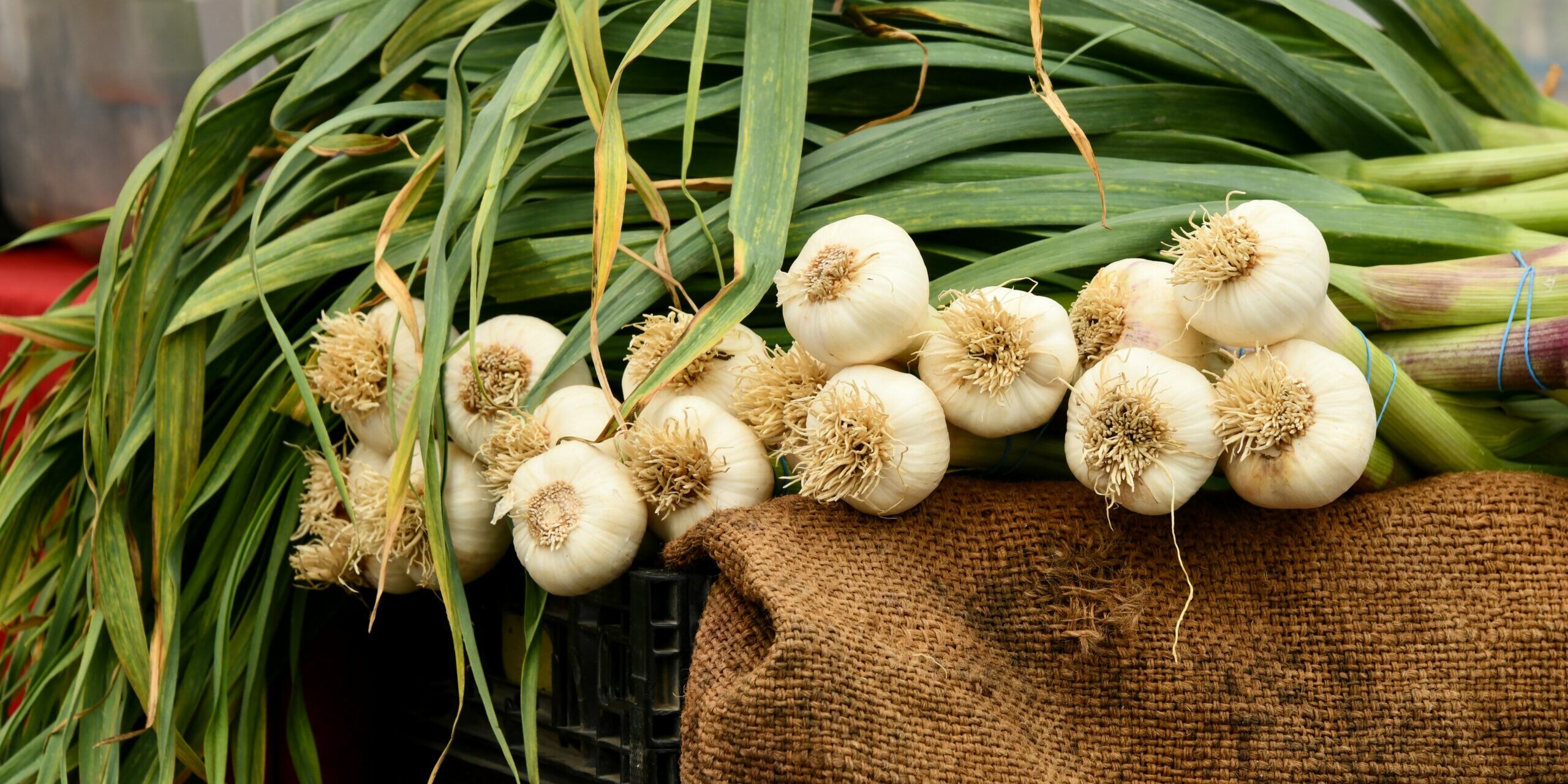HOW TO PLANT GARLIC
Why grow garlic at home? Because its creamy, nut-like, fresh-from-the-garden-flavor is heavenly!
Garlic is easy to grow and produces numerous bulbs after a long growing season. It is frost tolerant. Beyond its intense flavor and culinary uses, “the stinking rose” is good in the garden as an insect repellent and has been used for centuries as a home remedy.
Planting
Do not plant garlic cloves from the grocery store. They may be unsuitable varieties for our area, and most are treated to make their shelf life longer, making them harder to grow. Instead, get cloves from a mail order seed company or a local nursery or neighbor. After your first successful harvest of garlic, keep your largest bulbs as your seedstock for next year’s planting.
Plant garlic in the fall in our area, one to two weeks after the first killing frost.
Break apart your garlic bulb a few days before planting, but keep the papery husk on each individual clove.
Select a sunny spot. Ensure the soil is well-drained with plenty of organic matter.
Place cloves four inches apart and two inches deep, in their upright position (the wide root side facing down and pointed end facing up).
In the spring, as warmer temperatures come, shoots will emerge through the ground.
Care
Northern gardeners should mulch heavily with straw for overwintering. Mulch should be removed in the spring after the threat of frost has passed. (Young shoots can’t survive in temps below 20°F on their own. Keep them under cover.)
The flower shoots that emerge in spring on hardneck garlic varieties are called scapes. These may decrease bulb size, so you may remove them if you choose. Some folks love cooking the tender scapes, harvested just after they make their characteristic loop-the-loop. They may be cooked like green beans, or blended into a pesto.
Weeds should not be a problem until the spring. Weed as needed.
Garlic requires adequate levels of nitrogen. Fertilize accordingly, especially if you see yellowing leaves.
Water every three to five days during bulbing (mid-May through June).
Pests
Garlic has very few problems with pests in the garden (in fact, it’s a natural pest repellent!), and also very few problems with the diseases that plague other veggies. White Rot is one concern, but you should also keep an eye out for the same pests that plague onions.
White Rot is a fungus that may attack garlic in cool weather. Not much can be done to control or prevent that problem except rotating your crops and cleaning up the area after harvesting. The spores can live in the soil for many years. The fungus affects the base of the leaves and roots.
Harvest/Storage
Harvest time depends on conditions, but the clue is to look for yellowing tops. Harvest when the bottom leaves are brown and the top is about half yellow and half green.
In our northern climate, harvesting will probably be in late June or July.
Check one or two bulbs for size and wrapper quality; dig too early and the bulb will be immature. Discontinue watering a few days before you plan to harvest.
To harvest, carefully lift the bulbs with a spade or garden fork. Pull the plants, carefully brush off the soil, and let them cure in an airy, shady spot for two weeks. You can hang them in bunches of four to six, or lay them out on a screen or rack. Make sure all sides get good air circulation.
The bulbs are cured and ready to store when the wrappers are dry and papery and the roots are dry. The root crown should be hard, and the cloves can be cracked apart easily.
Once the garlic bulbs are dry, you can store them. Remove any dirt and trim off roots or leaves. Keep the wrappers on—but you can remove the dirtiest outside layers.
Garlic bulbs may be stored individually with the tops removed (cut stems ½ to one inch above the cloves), or the dried tops may be braided together to make a garlic braid to hang in the kitchen or storage room.
Bulbs should be stored in a cool (40 degrees F), dark, dry place, and can be kept in the same way for several months. Don’t store in your basement if it’s moist!
The flavor will increase as the bulbs are dried.
If you plan on planting garlic again next season, save some of your largest, best-formed bulbs to plant again in the fall.
Recommended Varieties
There are two types of garlic: Softneck and Hardneck.
Softneck varieties, like their name suggests, have necks that stay soft after harvest, and therefore are the types that you see braided. They typically produce more cloves than hardneck varieties, but do not grow scapes.
Hardneck varieties grow one ring of cloves around a stem. They are extremely cold hardy, but do not store as well or long as other varieties. Their flavor is more mild than softnecks.
Elephant Garlic is actually in the leek family and are not recommended in our area, due to lack of hardiness. Their flavor is more like onion than traditional garlic. Bulbs and cloves are large, with about 4 cloves to a bulb.







